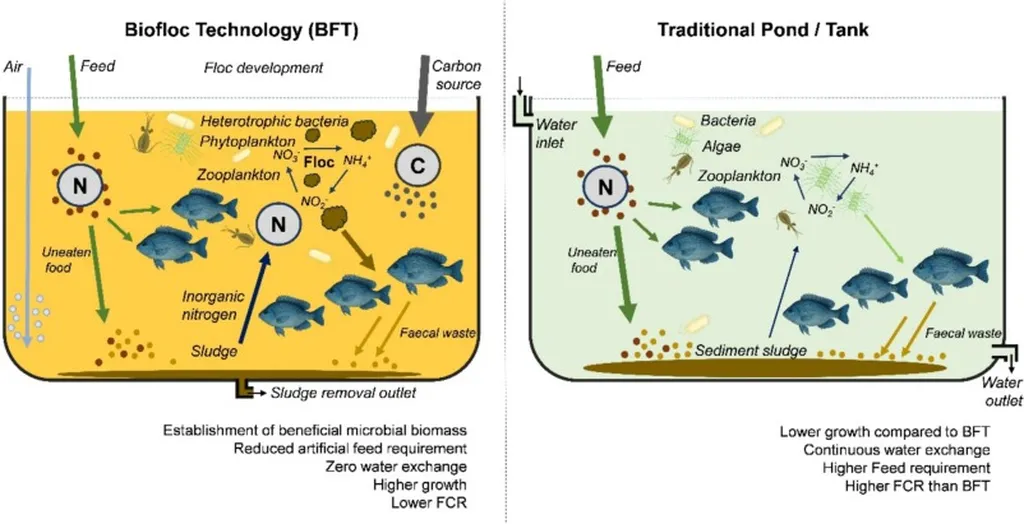In the quest to meet the world’s growing demand for seafood while minimizing environmental impact, researchers are turning to innovative aquaculture practices. A recent study published in the *International Journal of Bio-Resource and Stress Management* explores the potential of polyculture—a system where different species are raised together—and biofloc technology (BFT) to create a more sustainable and productive aquaculture model.
The research, led by M. Joshna from the Department of Aquaculture at Tamil Nadu Dr. J. Jayalalithaa Fisheries University, focuses on the polyculture of Genetically Improved Farmed Tilapia (GIF tilapia) and Penaeus vannamei, a species of shrimp. This approach leverages the natural synergies between the two species to enhance overall productivity and reduce disease incidence.
Polyculture offers several advantages. For instance, shrimp can consume tilapia feces and unused fish feed, while tilapia filter phytoplankton, which helps maintain oxygen levels in the water. Additionally, shrimp bioturbation— the process by which shrimp disturb the sediment—returns nutrients to the water column, promoting phytoplankton growth and providing natural feed for the tilapia. “This mutualistic relationship not only improves the efficiency of feed utilization but also reduces the environmental footprint of aquaculture,” explains Joshna.
Biofloc technology further enhances this system by recycling nutrients through microorganisms. Heterotrophic bacteria convert nitrogen compounds into microbial biomass, which serves as a food source for the aquatic organisms. Chemoautotrophic bacteria convert ammonia into nitrite and nitrate, reducing toxic buildup in the water. “BFT is a game-changer for sustainable aquaculture,” says Joshna. “It minimizes the need for water exchange and reduces the discharge of nutrients into the environment, making the system more eco-friendly.”
The commercial implications of this research are significant. As the global demand for seafood continues to rise, farmers are seeking ways to increase productivity while adhering to environmental regulations. Polyculture combined with BFT offers a promising solution, potentially reducing production costs and improving the resilience of aquaculture systems to disease and environmental fluctuations.
This study highlights the importance of integrating ecological principles into aquaculture practices. By understanding and harnessing the natural interactions between species, researchers and farmers can develop more sustainable and efficient systems. As the aquaculture industry continues to evolve, the adoption of such innovative practices could shape the future of seafood production, ensuring a steady supply for growing populations while protecting the planet’s resources.

